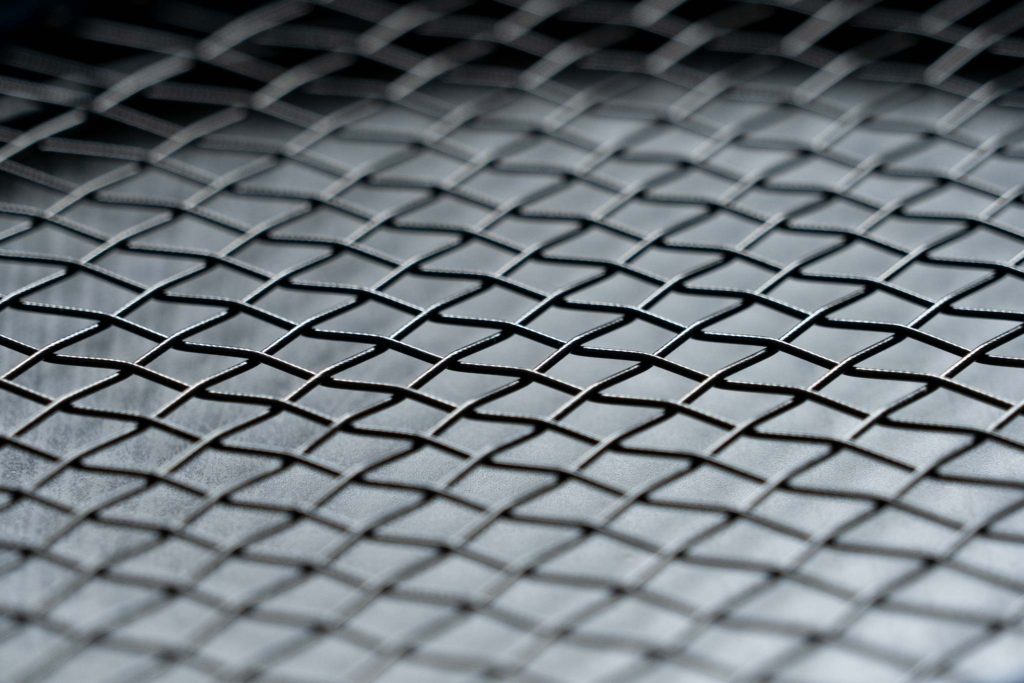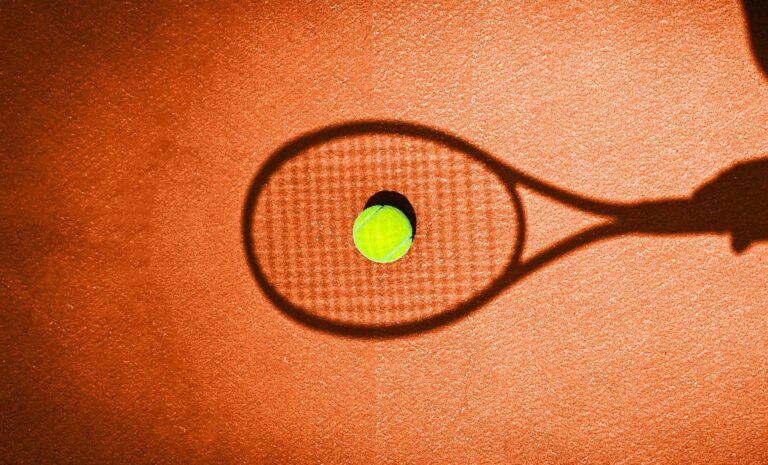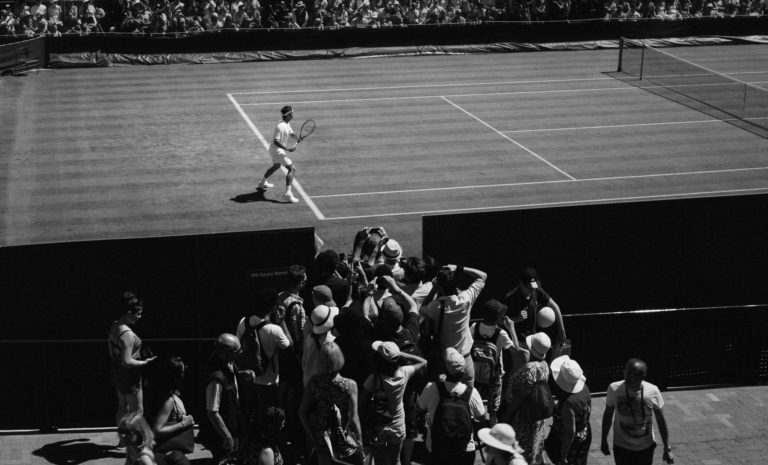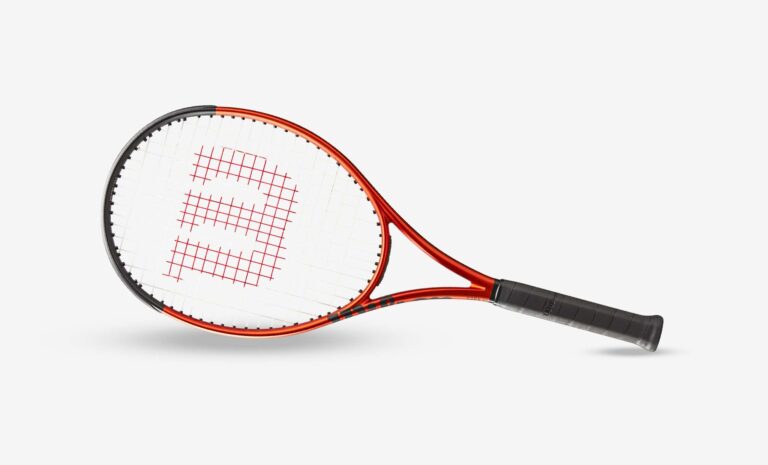Understanding the different parts of a tennis racket is crucial for players at all levels. Each component plays a specific role in the racket’s performance, affecting power, control, and comfort. Whether you’re a beginner or a seasoned player, a deeper knowledge of your tennis racket’s anatomy can help you choose the best racket for your game or help you improve your performance with the racket you already have.
The Anatomy of a Tennis Racket
While racket technology advances and new rackets are released ever year, the key components of a tennis racket have, for the most part, remained the same since the early days of the sport. Here’s a diagram of the different parts of a tennis racket, in this case illustrated using a Wilson Pro Staff 6.0 25th Anniversary racket:

The Parts of a Tennis Racket - An Overview
The components of a tennis racket can be divided into three key sections: the head, the shaft and the handle. Let’s take a closer look at each of the components in a little more detail…
The Head

The head is the top section of the racket that holds the strings and is the part of the racket that makes contact with the ball.
Head size has a big impact on the amount of power that a tennis racket can generate. Wooden tennis rackets used to feature head sizes of 60-70 sq inches, but these day modern tennis rackets have head sizes of 90-110 sq inches. Generally speaking, beginner tennis rackets have bigger head sizes and are a little easier to play with. They also generate more power, which is why professional tennis players tend to use smaller head sizes as the provide less power and therefore offer more control.
The Beam

The beam of a tennis racket is what we call the side or the width of a tennis racket. the width of the beam can play a significant role in a racket’s stability, flexibility and control. So, naturally, not all beams are the same and the beam width will be thicker or thinner depending on the type of tennis racket. Generally speaking, power rackets tend to have thicker beams which are stiffer and allow for more string movement, while control oriented rackets tend to have thinner beams as it makes them more flexible but limits string movement on contact.
It’s also worth knowing that not all rackets have a consistent beam width and that some have what is known as a tapered beam which is widest at the sides of the racket and narrower near the top of the head and the throat.
The Strings

While they aren’t technically part of the frame, a tennis racket wouldn’t be much use without strings. The strings in a tennis racket are made up of vertical strings, called the mains, and horizontal strings, called the crosses. Together, they form a trampoline-like surface used for hitting the ball called the string bed.
Tennis strings come in a range of different materials, shapes and gauges (or thickness). The specific type of tennis string you play with and the tension you use can have a huge impact on the amount of power, control and spin you can generate with your shots.
The Grommets

Grommets are small plastic pieces inserted into the frame that the strings pass through. They protect both the frame and the strings from wear and tear. The size and design of the grommets can also play a role in the overall feel and playability of a racket. Generally speaking, bigger or wider grommets allow the strings to move a little more which provides a little more power, while smaller or narrower grommets restrict the strings from moving too much, creating a stiffer string bed and providing more control.
The individual grommets are connected by grommet strips which makes them easier to insert and remove if needed.
The Bumper Guard

Located at the top of the racket head, the bumper guard is a protective strip made from a durable plastic that shields the frame from damage if and when it comes into contact with the court. The bumper guard also serves as a grommet strip for most of the racket’s main strings.
The Throat

The throat is the triangle-shaped section in the middle of the racket that connects the head and the handle. The design of a racket’s throat can play a huge role in the flexibility, stability and overall feel of a tennis racket. Formerly, wooden tennis rackets had a closed throat design which made them heavier and stiffer. However, most modern rackets have what we call an open throat which creates the triangle shape and makes rackets lighter, more flexible and more powerful.
The Handle

The handle is the bottom section of the racket and is the part that players grip. Most tennis rackets have a standard handle length of 19 cm or just over 7.5 inches. However, extended length rackets generally have a slightly longer handle which increases the overall length of the tennis racket and gives the player more leverage which leads to more powerful shots.
Most tennis racket handles are made using a pallet system in which the rackets are made with the same hairpin (extension of the frame) and then pallets are added to the hairpin to create the grip size and shape. A racket’s handle or grip size ranges from 4 inches to 4 ⅝ inches in circumference. Choosing the right grip size for your tennis racket is essential to make sure you have a comfortable grip.
The Grip

The grip on a tennis racket is the outer cover applied to the handle to create a more padded and comfortable surface for the players to grip onto. Tennis rackets come with what is known as an “original grip”, usually a synthetic grip or geniune leather grip.
Most players then choose to add another thin “overgrip” to the handle to protect the original grip and create an even more cushioned feel. Overgrips are available in mainly two different types: dry and tacky. Dry grips help more with sweat absorption while tacky grips help create more traction but, ultimately, both work to keep the racket from slipping out of a player’s hand.
The Bevels

The handle on a tennis racket has an octagonal profile, formed by eight bevels (sides). The bevels help stop the racket from twisting in the players hand. Bevels also play a vital role in learning how to grip a racket, whether you choose to use a Eastern forehand grip, a Semi-western or a full-western grip.
The Grip Tape / Collar

The grip tape is a thin piece of tape, usually black or white, that is located at the top-end of the handle and is used to secure the grip or overgrip in place. In some cases, a small rubber band called a grip collar is used instead.
The Butt & Butt Cap

The butt of the the racket is the bottom end of the handle. You’ll notice that it’s slightly wider than the rest of the handle and that’s to make the grip feel a little more comfortable in your hands and to keep it from slipping out of your hand when you swing the racket.
The butt cap is a small plastic seal at the base of the racket which usually features the racket manufacturer’s logo and the racket’s grip size. In some cases, the butt cap will have a removable trap door which allows players to access the inside of the handle and add weight to the racket to change its overall weight and balance.
Tennis Racket Components vs Specs
It’s also worth knowing that there’s a difference between what we consider the parts of a tennis racket and tennis racket specs.
As we’ve covered in this article, the parts of a tennis racket are the structural components that all tennis rackets have in common. When we refer to tennis racket specs however, we’re talking about the design elements which make one racket different to another, such as racket head size, the racket weight and swingweight, the racket’s balance and the string pattern, amongst other things.
The Parts of a Tennis Racket - FAQs
What is the outer part of a tennis racquet handle called?
The outer part of a tennis racket handle usually refers to the grip. In most cases, this is an overgrip, which is a thin cover applied to the racket’s handle to make it more comfortable to hold.
What is the part of the racket with the strings called?
The part of the tennis racket that houses the strings is known as the racket head, which is the oval shaped part of the frame which is used to hit the ball.
What is the middle of a tennis racket called?
The middle of a tennis racket is what we usually call the throat of the shaft. It’s the triangular shaped gap which connects the head of the tennis racket and the handle.
Where is the center of gravity in a tennis racket?
The centre of gravity of a tennis racket, which is known as the balance point, is somewhere near the throat for most rackets. The balance of a tennis racket depends on it’s design, which means that different rackets have a different centre of gravity.
So, you now know the key components of a tennis racket’s anatomy and are in a much better place to make an educated decision when choosing you first or next tennis racket. That said, if you have any questions at all relating to the parts of a racket, please be sure to let us know in the comments below!




